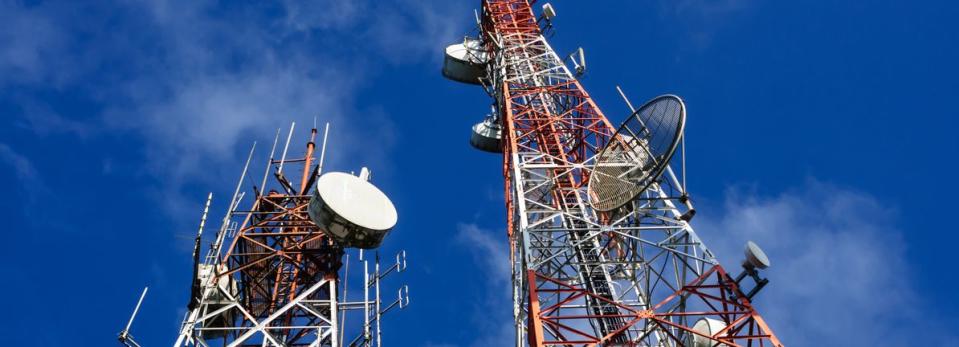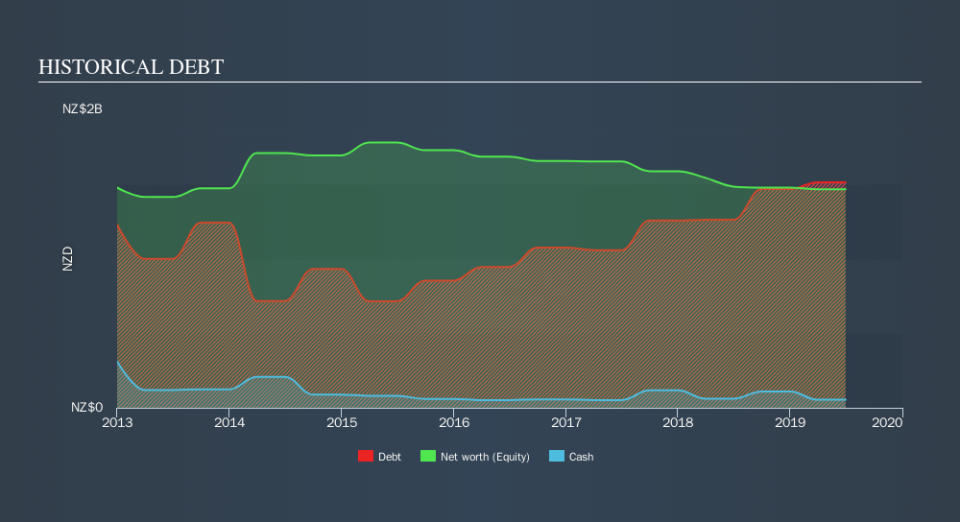Spark New Zealand (NZSE:SPK) Has A Pretty Healthy Balance Sheet

The external fund manager backed by Berkshire Hathaway's Charlie Munger, Li Lu, makes no bones about it when he says 'The biggest investment risk is not the volatility of prices, but whether you will suffer a permanent loss of capital. So it might be obvious that you need to consider debt, when you think about how risky any given stock is, because too much debt can sink a company. Importantly, Spark New Zealand Limited (NZSE:SPK) does carry debt. But the more important question is: how much risk is that debt creating?
What Risk Does Debt Bring?
Debt and other liabilities become risky for a business when it cannot easily fulfill those obligations, either with free cash flow or by raising capital at an attractive price. Part and parcel of capitalism is the process of 'creative destruction' where failed businesses are mercilessly liquidated by their bankers. However, a more common (but still painful) scenario is that it has to raise new equity capital at a low price, thus permanently diluting shareholders. Of course, debt can be an important tool in businesses, particularly capital heavy businesses. When we think about a company's use of debt, we first look at cash and debt together.
See our latest analysis for Spark New Zealand
How Much Debt Does Spark New Zealand Carry?
The image below, which you can click on for greater detail, shows that Spark New Zealand had debt of NZ$1.51b at the end of June 2019, a reduction from NZ$1.77b over a year. However, it also had NZ$54.0m in cash, and so its net debt is NZ$1.46b.
How Strong Is Spark New Zealand's Balance Sheet?
The latest balance sheet data shows that Spark New Zealand had liabilities of NZ$944.0m due within a year, and liabilities of NZ$1.69b falling due after that. On the other hand, it had cash of NZ$54.0m and NZ$615.0m worth of receivables due within a year. So its liabilities total NZ$1.96b more than the combination of its cash and short-term receivables.
While this might seem like a lot, it is not so bad since Spark New Zealand has a market capitalization of NZ$8.38b, and so it could probably strengthen its balance sheet by raising capital if it needed to. But it's clear that we should definitely closely examine whether it can manage its debt without dilution.
In order to size up a company's debt relative to its earnings, we calculate its net debt divided by its earnings before interest, tax, depreciation, and amortization (EBITDA) and its earnings before interest and tax (EBIT) divided by its interest expense (its interest cover). Thus we consider debt relative to earnings both with and without depreciation and amortization expenses.
We'd say that Spark New Zealand's moderate net debt to EBITDA ratio ( being 1.6), indicates prudence when it comes to debt. And its strong interest cover of 18.0 times, makes us even more comfortable. Also good is that Spark New Zealand grew its EBIT at 10% over the last year, further increasing its ability to manage debt. When analysing debt levels, the balance sheet is the obvious place to start. But ultimately the future profitability of the business will decide if Spark New Zealand can strengthen its balance sheet over time. So if you want to see what the professionals think, you might find this free report on analyst profit forecasts to be interesting.
But our final consideration is also important, because a company cannot pay debt with paper profits; it needs cold hard cash. So we clearly need to look at whether that EBIT is leading to corresponding free cash flow. During the last three years, Spark New Zealand produced sturdy free cash flow equating to 61% of its EBIT, about what we'd expect. This free cash flow puts the company in a good position to pay down debt, when appropriate.
Our View
The good news is that Spark New Zealand's demonstrated ability to cover its interest expense with its EBIT delights us like a fluffy puppy does a toddler. And we also thought its conversion of EBIT to free cash flow was a positive. When we consider the range of factors above, it looks like Spark New Zealand is pretty sensible with its use of debt. That means they are taking on a bit more risk, in the hope of boosting shareholder returns. Another positive for shareholders is that it pays dividends. So if you like receiving those dividend payments, check Spark New Zealand's dividend history, without delay!
If, after all that, you're more interested in a fast growing company with a rock-solid balance sheet, then check out our list of net cash growth stocks without delay.
We aim to bring you long-term focused research analysis driven by fundamental data. Note that our analysis may not factor in the latest price-sensitive company announcements or qualitative material.
If you spot an error that warrants correction, please contact the editor at editorial-team@simplywallst.com. This article by Simply Wall St is general in nature. It does not constitute a recommendation to buy or sell any stock, and does not take account of your objectives, or your financial situation. Simply Wall St has no position in the stocks mentioned. Thank you for reading.

 Yahoo Finance
Yahoo Finance 
